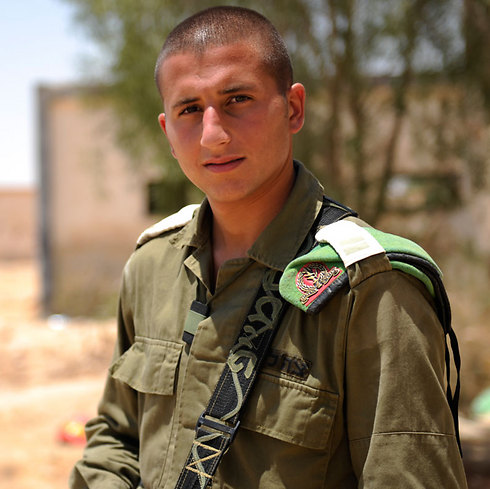
Where and when will ISIS in Sinai act against Israel? The Israeli Intelligence community has been struggling to provide a real answer to this question in the last year. The reasons are varied – the ISIS branch operating out of Sinai is quite compartmentalized, and spread throughout a massive desert territory. They have no permanent training base, and use local Bedouin smugglers to operate in the border area. In any case, in order to prepare for the possibility of an attack, the mixed gender Caracal battalion has begun training in urban warfare.
In the face of this reality, military intelligence has been pouring resources into building a better intelligence picture of the organization which calls itself "Ansar Bait al-Maqdis," and although a whole department in the Shin Bet was established for this specific purpose in the wake of the revolution in Egypt, the Southern Command has been preparing for the worst case scenario. These scenarios include ISIS attacks on the Nitzana and Kerem Shalom crossing, or on the Israeli towns and villages near the northern portion of the Israeli/Egyptian border.
Dozens of terrorists are expected to partake in such an attack, which will most likely take place as part of a larger military-like operation, similar to the attacks conducted against Egyptian military outposts in the last year which caused the deaths of dozens of Egyptian police officers and soldiers. The coordinated attacks on the Egyptian army included attempts to capture swaths of urban terrain in northern Sinai.
A tall fence, which spans 220 kilometers on the border, is only expected to delay any strategic attack of the type planned by ISIS, which the Southern Command deems a "military operation" for all intents and purposes. As such, the fence is merely an element of the broader IDF readiness. The IDF's Caracal battalion, which is permanently charged with protecting a large swath of the Egyptian border area, took part in urban warfare training similar to that of other IDF infantry units, for the first time since its establishment.
As such, IDF officials believe that the mixed gender battalion – which includes male and female fighters, can do battle quickly and efficiently inside of Israeli towns or villages in the case of an ISIS incursion. The thinking within the Edom brigade, which is responsible for the border, is that the first responders to arrive on the scene of such an attack, like others which have taken place in recent years, will be the Caracal fighters who are responsible for the regional section, but whose training has never included urban warfare.
The first class of Caracal fighters recently trained on clearing buildings at the Kziot base, while using pyrotechnic effects which simulated live fire and grenades. In addition to the urban warfare training, the fighters practiced camouflage and observation techniques against militant forces across the border.
The command recently set concrete barriers along the border, in an attempt to disrupt anti-tank missile fire. Tank ambushes are also used by the Edom brigade in complex situations.
According to a deputy company commander in the battalion, Lt. Oren Pasan, "The region here is not similar to the West Bank, there you constantly feel the tension, which helps maintain a high level of operational readiness, and as such we hold as many simulated attack exercises as possible."
The Caracal company commander, Captain Chosa Levin, knows that she may be the first person to meet the armed fighters from the most ruthless terror organization on the planet, and will have to lead her troops in order to end any such incursion with a good outcome. "I don’t know when the next attack will happen. We are stronger than our enemy, but we still prepare for the worst case scenario."
Among the battalion's fighters there are several religious female fighters, as well as fighters from Dimona's Israelite community.
The ISIS branch in Sinai, which was established in 2010 by Al Qaeda, and pledged allegiance to the Islamic State last year, is estimated to maintain 2,000-3,000 fighters armed with trucks and advanced weaponry including Kornet anti-tank missiles, and shoulder fired anti-aircraft missiles.
In contrast to the Islamic state, which rules over a swath of territory containing seven million people in Iraq and Syria, the Sinai Branch has yet to show signs of territorial aspirations, apparently due to the Egyptian army's firm opposition to the group.
The Sinai branch has only recently carried out its first "ISIS style" execution, when it beheaded a Croatian citizen.
Ironically, it was only after "Ansar Bait al-Maqdis" became an ISIS affiliate, that it began attacking Egyptian army positions, and as a result Israel was temporarily left out of their crosshairs. Before the transition the Al-Qaeda group had conducted several attacks against Israel starting in 2011.
Two months ago, fighters from ISIS in Sinai managed to set an Egyptian combat ship ablaze after striking it with an anti-tank missile two miles from the shore, near Egyptian Rafah.






















